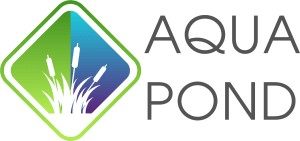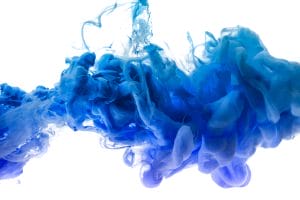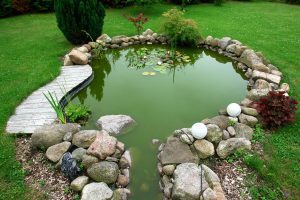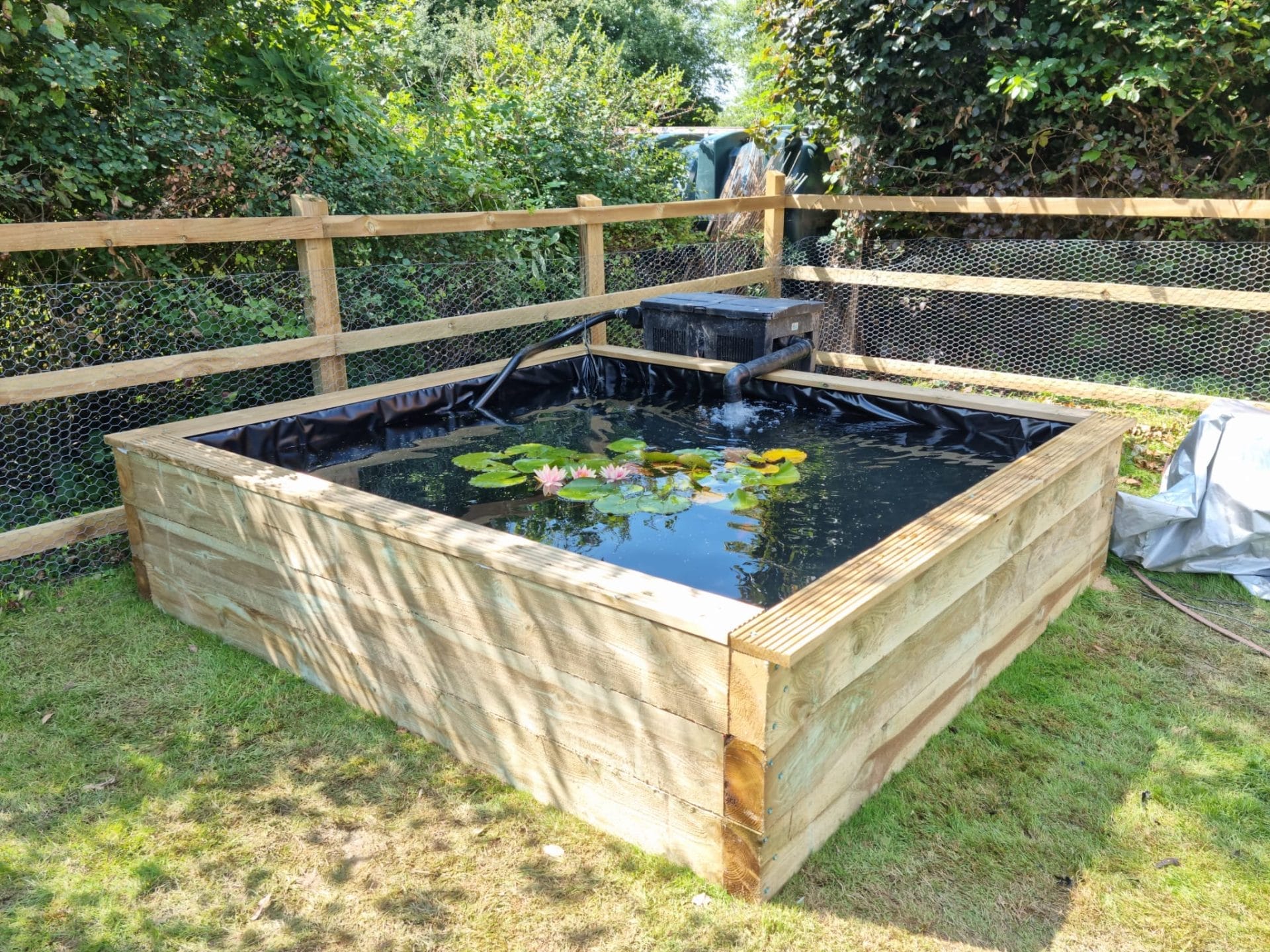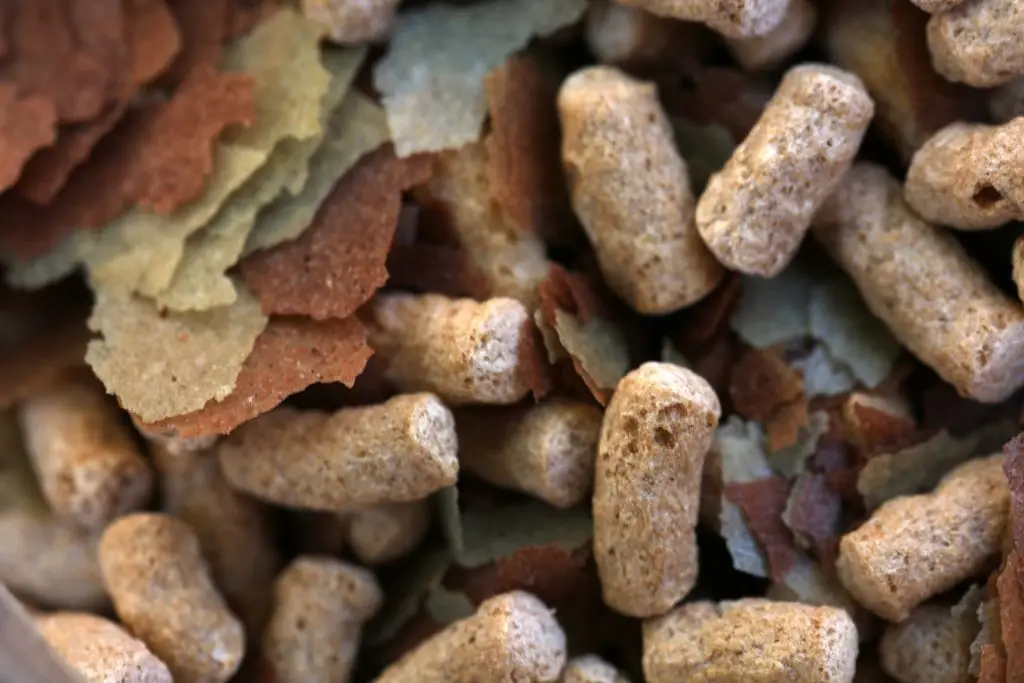
Pond Fish Food: Essential Guide for Optimal Health and Growth
Pond fish food plays a vital role in the health and wellbeing of fish in any garden pond. Choosing the right type of food not only supports their growth and vitality but also contributes to the overall balance of the pond environment. With various options available, including pellets, flakes, and sticks, knowing which one to select can make all the difference in maintaining a thriving aquatic ecosystem.

Understanding the nutritional needs of specific pond fish species helps in selecting the best food options. Factors such as age, size, and the type of fish will determine the most suitable diet. By paying attention to feeding strategies and proper food selections, pond owners can enhance the quality of their fish while ensuring the pond remains a healthy habitat.
Shopping for pond fish food can be convenient with online options available. Knowing what to look for and how to choose based on quality and ingredients can help make informed decisions. Effective feeding translates to better pond health and happier fish, making it essential for every pond enthusiast to understand the fundamentals of pond fish nutrition.
Key Takeaways
- Selecting the right fish food is crucial for pond health and fish growth.
- Knowledge of fish species helps in choosing appropriate food types.
- Online shopping provides easy access to quality pond fish food options.
Understanding Pond Fish Nutrition
Pond fish require a balanced diet to thrive, ensuring their health and vibrant colours. Key factors include the nutritional needs of popular species like koi and the significance of pellets in their diets. Understanding these elements can greatly enhance a pond owner’s ability to maintain healthy fish.
Nutritional Requirements of Koi and Other Pond Fish
Koi and most pond fish are omnivorous, needing a blend of nutrients for optimal growth. Their diet should contain:
- Proteins: Essential for growth, muscle repair, and overall health. Protein sources include insects, worms, and specially formulated fish food.
- Carbohydrates: Important for energy. While pond fish can gain some carbohydrates from natural sources like aquatic plants, commercial fish food also provides this.
- Vitamins and minerals: Vital for immune function and health. A mix of vitamins A, D, and E, along with minerals like calcium and phosphorus, helps fish resist disease.
Choosing high-quality fish food that matches their dietary needs is crucial for the health of koi and other pond fish.
The Role of Pellets in Pond Fish Diets
Pellets have become a popular choice among pond owners due to their convenience and nutritional value. These manufactured foods often come with a balanced blend of nutrients that pond fish require.
Pellets vary in size and type, catering to different fish species:
- Floating pellets: These allow easy monitoring of feeding behaviour and help prevent waste from sinking.
- Sinking pellets: Ideal for fish that feed at the bottom, these ensure all fish have access to food.
When selecting pellets, it is essential to look for those containing high-quality ingredients and appropriate protein levels for the specific pond fish. Properly formulated pellets can greatly enhance the growth and health of pond fish like koi.
Types of Pond Fish Food
Pond fish require a varied diet to thrive, and understanding the types of food available helps ensure their well-being. Key options include pond sticks, floating and sinking pellets, and flake foods tailored for smaller fish.
Pond Sticks and Their Benefits
Pond sticks are a popular choice for many pond owners. They are formulated to float, allowing fish to surface easily to feed. This encourages more interaction between the fish and the observer, enhancing enjoyment.
Pond sticks often contain a balanced mix of nutrients, including proteins, vitamins, and minerals. This combination supports fish growth and health. The size of sticks caters to a variety of pond fish, making it easier to feed multiple species simultaneously.
Fish tend to enjoy the taste of these sticks, leading to less waste compared to some other foods. With reduced leftovers, pond water quality remains better, which is crucial for overall ecosystem health.
Choosing Between Floating and Sinking Pellets
When selecting pond pellets, it is essential to consider whether to choose floating or sinking varieties. Floating pellets are more visible and allow fish to take their time while feeding. They are typically ideal for more active fish that feed at the surface.
On the other hand, sinking pellets are designed for bottom feeders such as catfish and certain types of carp. These pellets prevent surface competition, ensuring that every fish has access to food.
Using a combination of both types can provide a well-rounded diet. Fish will benefit from nutritional variety and content suited to their feeding behaviours, supporting their health throughout the seasons.
Flake Foods for Smaller Fish
Flake foods are an excellent option specifically for smaller pond fish. These flakes are easily digestible and come in various formulations to meet different fish species’ needs. They typically contain a mix of proteins and other vital nutrients essential for growth and vitality.
Flake food often floats at the surface, making it easy for fish like goldfish and smaller minnows to consume. Additionally, flakes can be spread over a larger area, promoting less competition during feeding time.
For effective feeding, it’s essential to avoid overfeeding. Only small amounts should be given at a time to prevent contamination in the pond water. This practice helps maintain a clean aquatic environment while ensuring fish receive adequate nutrition.
Feeding Strategies for Pond Fish

Feeding pond fish effectively requires careful consideration of frequency, portion sizes, and the changing seasons. Proper feeding strategies can help maintain fish health and promote growth.
Feeding Frequency and Quantities
The frequency of feeding pond fish depends on various factors like water temperature and fish species. Generally, feeding should occur 1 to 3 times a day. It is best to feed smaller amounts more frequently rather than one large meal. This approach mimics natural feeding habits and aids digestion.
A good rule of thumb for quantities is to offer only as much food as the fish can consume within a 5 to 10 minute period. Overfeeding can lead to poor water quality and health issues for the fish. Observing the fish during feeding can help in determining the right amount. Most commercial fish foods, such as pellets and flakes, come with feeding guidelines that assist in managing portion sizes effectively.
Seasonal Feeding Adjustments
Feeding strategies should vary with the seasons. In spring, as temperatures rise, fish become more active. They require more food to recover from winter. Feeding should include a wheat germ-based food when the water temperatures reach above 10 degrees Celsius.
During summer, fish are usually very active. They may need more frequent feedings, but always in small amounts. This helps to prevent excess waste and maintain water quality. As autumn approaches, fish will begin to slow down, signalling a need for less food. Finally, in winter, feeding should be minimal or halted entirely. Fish enter a period of dormancy, needing little to no food when water temperatures drop. Adjusting feeding schedules according to these seasonal changes is vital for pond fish health.
Considerations for Fish Food Selection

Selecting the right pond fish food requires careful thought. Quality, ingredients, and nutritional content play key roles in ensuring fish health and pond clarity. Below are important factors to consider when choosing fish food.
Evaluating Fish Food Quality
When evaluating fish food, quality is critical. Look for food made from high-quality ingredients, such as fish meal, aquatic plants, and grains. These are essential for proper growth and health.
Next, consider the type of food. Pellets or flakes are common forms. Pellets are often preferred for larger fish, while flakes are suitable for smaller varieties. Ensure the food is appropriate for the specific type of pond fish being kept.
Check for certifications or brand reputation. Reputable brands often undergo third-party testing for nutrients and safety. Avoid foods with fillers or artificial colours, as these can harm fish and water quality.
Understanding Fish Food Labels
Reading fish food labels can reveal much about the product’s quality. Ingredients should be listed in order of weight, with the main ingredients at the top. Look for natural sources of protein, such as shrimp or krill.
Pay attention to the nutritional information. Ideal fish food will provide a balanced ratio of protein, fats, and carbohydrates. For most pond fish, a protein level of around 30% is beneficial.
Moreover, check for added vitamins and minerals. These support immune health and overall well-being. Some labels also indicate the food’s suitability for specific seasons, which can greatly impact feeding choices.
The Impact of Fish Food on Pond Health

Fish food plays a pivotal role in maintaining a healthy pond ecosystem. The right balance of nutrition helps support fish health while preventing adverse effects on water quality. Poor feeding practices can lead to significant issues in pond habitats.
Balancing Nutrition with Pond Ecosystem Maintenance
Providing the right type of fish food is essential for maintaining a balanced ecosystem. Quality fish food contains the necessary nutrients, such as proteins, fats, vitamins, and minerals. This nutritional balance supports fish growth, reproduction, and activity levels.
Different fish species require specific types of food. For instance, herbivorous fish need plant-based diets, while carnivorous species thrive on protein-rich foods. Using the appropriate feed promotes fish vitality and contributes to a thriving pond environment.
To maximise the benefits, it is important to adjust the amount and type of fish food according to the seasons. Warmer months may require higher protein content to boost growth, while colder months need lower protein as fish metabolism slows.
Preventing Overfeeding and Water Quality Issues
Overfeeding pond fish can lead to severe water quality problems. Excess food can decompose, introducing pollutants into the water, which can cause harmful algal blooms. These blooms deplete oxygen levels, stressing fish and other aquatic life.
Regular monitoring of feeding habits is crucial. It is recommended to feed only what fish can consume within a few minutes. This practice not only prevents waste but also maintains water clarity.
In addition, implementing a feeding schedule can help regulate fish food intake. Feeding smaller amounts multiple times a day is often more beneficial than a single large feeding. This method aligns with their natural feeding behaviours and supports a healthier aquatic environment.
Customising Fish Diets
Customising fish diets is essential for optimal health and growth. Different fish species have varied nutritional needs, and incorporating the right foods can enhance their colour and vitality. Two effective ways to customise diets are by supplementing with natural foods and creating homemade fish food.
Supplementing With Natural Foods
Adding natural foods to a pond fish diet boosts nutrition. Fish can benefit from items such as live foods like brine shrimp and bloodworms, which are excellent for their development. These foods mimic their natural diet, making them more appealing and nutritious.
- Vegetables like peas, lettuce, and spinach can also be offered.
- Ensure to chop them into small pieces to prevent choking.
Another option is to use cookies specifically designed for fish. These are often rich in essential vitamins and minerals. Incorporating these natural supplements can lead to healthier, more energetic fish.
Homemade Fish Food Recipes
Creating homemade fish food allows for greater control over ingredients and nutrition. One simple recipe involves blending cooked peas with a small amount of gelatine and water. This mixture can be poured into an ice cube tray and frozen.
Another option is to use sweet potatoes or carrots. These can be boiled, mashed, and combined with fish flakes.
Both recipes offer a well-rounded diet enriched with natural nutrients. When preparing homemade food, it is important to adjust portions based on fish size and species to avoid overfeeding. Customised diets can significantly improve fish health and longevity.
Shopping for Pond Fish Food
When shopping for pond fish food, it is important to understand the variety of options available. Customers should know how to navigate different products and make informed decisions based on reviews.
Navigating Pond Fish Food Products Online
Many websites offer a wide range of pond fish food. Customers can explore options from sites like AllPondSolutions and Swell UK.
These platforms feature products geared towards specific fish types, such as koi and goldfish. Users can filter by type, size, and brand.
On marketplaces like Amazon, shoppers can easily compare products and prices. Many sellers provide bulk buying options, potentially saving money. It’s essential to consider shipping costs and delivery times, especially for larger orders.
Evaluating Customer Reviews and Ratings
Customer feedback is vital when shopping for pond fish food. Reviews can provide insight into a product’s quality and effectiveness.
Look for products with a substantial number of reviews. Higher ratings often indicate customer satisfaction. Specific comments about fish health or palatability can guide choices.
Manufacturer responses to customer questions can also be helpful. On sites like Aquatix-2u, detailed product descriptions and user feedback contribute to informed shopping experiences.
It is advisable to avoid new products with few reviews unless researching their ingredients and benefits thoroughly.
Online Purchasing Tips
When buying pond fish food online, it’s essential to understand the shipping and return policies. This knowledge helps to avoid surprises and ensures a smooth shopping experience. Additionally, selecting safe payment methods protects personal and financial information during the transaction.
Understanding Shipping and Return Policies
Shipping policies can vary significantly between online retailers. Customers should check if the seller offers free shipping on orders over a certain amount. Some stores may charge a flat rate, while others implement variable fees based on distance or weight.
It’s crucial to read the return policy as well. Customers should confirm if they can return unused items and if shipping costs are covered in such cases. Some retailers have specific time limits for returns. By being aware of these details, shoppers can avoid unnecessary costs and complications.
Safe Payment Methods for Fish Food Purchases
Using secure payment methods is vital for safe online transactions. Credit and debit cards often provide additional protection against fraud. Many online retailers also accept payment services like PayPal. This service allows customers to complete purchases without directly sharing credit card information with the seller.
It is important for shoppers to look for sites with SSL (Secure Socket Layer) certification. This type of encryption helps protect user data during transactions. Always review customer feedback about their shopping experiences to gauge the reliability of the payment processes.
Data and Privacy Considerations
Understanding data and privacy considerations is essential for any online interaction relating to pond fish food. This section focuses on managing cookie preferences and opting out of personalised ads to help users navigate their digital experiences safely.
Managing Cookie Preferences
Cookies are small text files stored on devices when visiting websites. They collect information, such as browsing habits and preferences. Users can manage their cookie settings by adjusting browser settings.
Most browsers offer options to accept, refuse, or delete cookies. It is advisable to review these preferences regularly.
Certain websites may provide prompts for cookie consent, allowing users to understand what data is collected. Users should read these notices carefully. They can typically opt for essential cookies or allow additional ones for enhanced functionality.
It’s important to note that refusing cookies may limit access to certain features or content on a website. Therefore, being informed about cookie preferences can enhance privacy while enjoying the website experience.
Opting Out of Personalised Ads
Personalised ads utilise device information and unique identifiers to tailor advertisements to individual preferences. While this can enhance user experience, it raises privacy concerns.
Users can often opt out of personalised ads through privacy settings on various platforms. This may involve adjusting settings on specific websites or using tools provided by browsers.
Additionally, third-party advertising networks allow users to manage their preferences directly. This can help reduce unwanted or intrusive ads based on personal data.
Users should look for options to disable targeted advertising. Being proactive in these settings ensures better control over the information shared online and may improve overall online privacy.
Adapting to User Experience
Understanding user behaviour is essential for better products and services. By focusing on audience insights and improving the online shopping experience, companies can meet customer needs effectively.
Leveraging Audience Insights for Improved Product Offering
Gathering audience insights is crucial for tailoring products to meet specific needs. Companies can utilise customer surveys, feedback forms, and social media interaction to gather valuable data on preferences.
By analysing this information, they can identify trends, such as popular fish food types and preferred packaging. This allows them to adjust their offerings, ensuring that they provide products that resonate with their target audience.
In addition, audience insights can inform advertising choices. Knowing what appeals to customers helps in crafting targeted marketing campaigns that engage effectively. This approach enhances customer satisfaction and loyalty, leading to repeat business.
Enhancing the Online Shopping Journey
A seamless online shopping experience is vital for customer retention. Optimising website navigation makes it easier for customers to find desired pond fish food. Streamlined categories and intuitive search functions improve user experience.
Incorporating detailed product descriptions and high-quality images also aids decision-making. Customers appreciate clear information about nutrition, ingredients, and feeding recommendations.
Implementing customer reviews can further enhance trust. Seeing feedback from other users helps prospective buyers feel confident in their choices. Additionally, offering multiple payment options ensures a hassle-free checkout process.
By focusing on these elements, businesses can create an enjoyable shopping experience that encourages customers to return. Enhancements like these lead to increased sales and customer loyalty.
Related Posts
- Top Steps for Pond Planning Permission: Ensure Your Project’s Success
- Who’s Hunting My Pond Fish in the UK: Identifying Predators and Protecting Your Aquatic Life
- Reviving Old Ponds: A Guide to Restoration for Wildlife and Ecosystems
- How To Best Find And Fix Pond Leaks Quickly: Effective Solutions for Immediate Results
